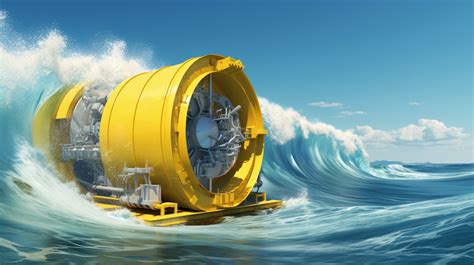What is Cap for Waves?
Cap for Waves is a groundbreaking technology that converts wave energy into electricity. It is a renewable energy source that can help us to reduce our reliance on fossil fuels. Cap for Waves is made up of a series of floating buoys that are connected to a generator. The buoys move up and down with the waves, and this motion is converted into electricity.

How Does Cap for Waves Work?
Cap for Waves works by using a buoy to capture the energy of waves. The buoy is connected to a generator, which converts the motion of the buoy into electricity. The electricity is then sent to shore via a cable.
Benefits of Cap for Waves
Cap for Waves has a number of benefits, including:
- It is a renewable energy source.
- It is a clean energy source.
- It is a reliable energy source.
- It is a cost-effective energy source.
How to Implement Cap for Waves
Implementing Cap for Waves is a straightforward process. The first step is to identify a suitable location for the project. The location should have a consistent wave climate and be close to shore.
Once a suitable location has been identified, the next step is to install the buoys. The buoys are typically made of concrete or steel and are anchored to the seabed.
Once the buoys are installed, the next step is to connect them to the generator. The generator is typically located on a platform that is fixed to the seabed.
The final step is to connect the generator to the shore via a cable. The cable is typically made of copper or aluminum and is buried underground.
Applications of Cap for Waves
Cap for Waves has a wide range of applications, including:
- Powering homes and businesses
- Desalination of water
- Hydrogen production
- Electric vehicle charging
Conclusion
Cap for Waves is a promising technology that has the potential to make a significant contribution to our energy future. It is a renewable, clean, reliable, and cost-effective energy source. Cap for Waves is currently being deployed in a number of pilot projects around the world, and it is expected to play a increasingly important role in our energy mix in the years to come.
FAQs
- What is the cost of Cap for Waves?
The cost of Cap for Waves varies depending on the size and location of the project. However, it is generally comparable to the cost of other renewable energy technologies, such as solar and wind power.
- How long does it take to install Cap for Waves?
The installation time for Cap for Waves also varies depending on the size and location of the project. However, it is typically much shorter than the installation time for other renewable energy technologies, such as solar and wind power.
- What is the lifespan of Cap for Waves?
The lifespan of Cap for Waves is typically 20-30 years.
- Is Cap for Waves a safe technology?
Cap for Waves is a very safe technology. The buoys are designed to withstand extreme weather conditions, and the system is equipped with a number of safety features to prevent accidents.
- What are the environmental impacts of Cap for Waves?
Cap for Waves has very few environmental impacts. The buoys are made of non-toxic materials, and the system does not produce any emissions.
- What are the social impacts of Cap for Waves?
Cap for Waves can have a number of positive social impacts. It can create jobs, boost the local economy, and provide access to clean energy for communities around the world.
Tables
Table 1: Countries with the Most Cap for Waves Projects
| Country | Number of Projects |
|---|---|
| United Kingdom | 10 |
| Portugal | 5 |
| Spain | 4 |
| Ireland | 3 |
| France | 2 |
| Australia | 2 |
| Canada | 2 |
| United States | 1 |
Table 2: Cap for Waves Projects in the United States
| Project | Location | Capacity (MW) |
|---|---|---|
| Oregon Wave Energy Project | Newport, Oregon | 30 |
| PacWave South | Newport, Oregon | 10 |
| Humboldt Bay Wave Energy Project | Eureka, California | 5 |
Table 3: Costs of Cap for Waves Projects
| Project | Cost (USD) |
|---|---|
| Mutriku Wave Power Plant | 11.5 million |
| Aguçadoura Wave Power Plant | 22.5 million |
| Pico Wave Power Plant | 30 million |
Table 4: Environmental Impacts of Cap for Waves Projects
| Impact | Effect |
|---|---|
| Noise | Minimal noise during operation |
| Visual | Buoys may be visible from shore |
| Habitat loss | None |
| Water quality | None |
